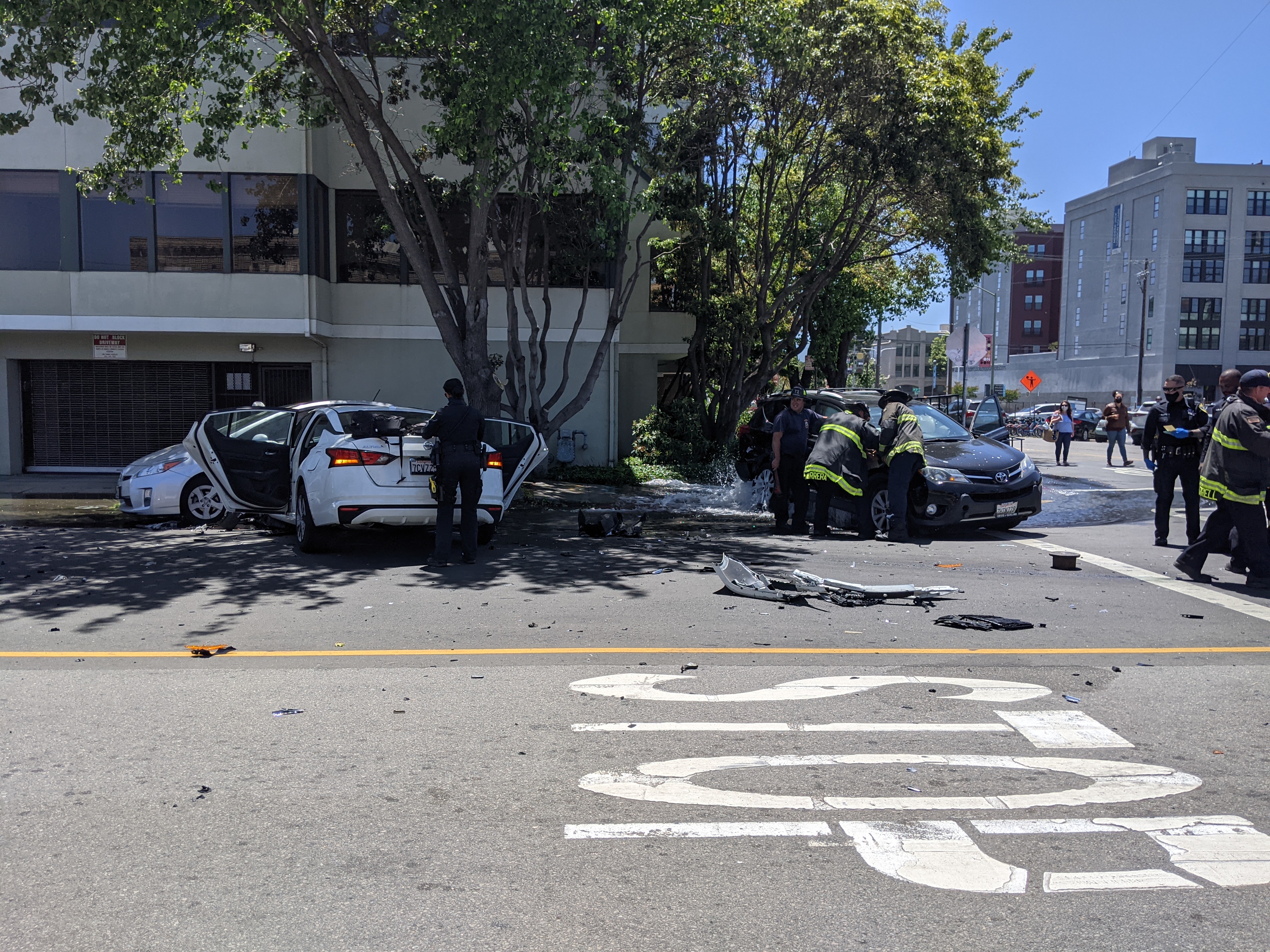Note: GJEL Accident Attorneys regularly sponsors coverage on Streetsblog San Francisco and Streetsblog California. Unless noted in the story, GJEL Accident Attorneys is not consulted for the content or editorial direction of the sponsored content.
More people are walking and biking and there are fewer per capita collisions on Telegraph in the KONO district, thanks to the 2016 installation of parking-protected bike lanes and other safety features, according to a report recently released to the public from the Oakland Department of Transportation.
The report, done in response to last year's request from the KONO Community Benefits District (BID) to look at removing the protected bike lanes, tabulated the results of an updated study on the pilot project from 20th to 29th Street. It indicated that "...the number of people walking and biking increased by over 100 percent during that period, but collisions have increased by 33 percent." It also shows that dangerous traffic violations, such as speeding and failing to yield at crosswalks, is also significantly down. This is consistent with an earlier 2017 before-and-after study done by the city that showed dramatic reductions in crashes.
The Oakland study also points out that results are consistent with experiences in other cities: "research in large Canadian cities of Montreal, Toronto and Vancouver finds that the presence of permanent protected bike lanes is associated with the lowest risk for collisions." [emphasis added]. Note that Montreal has had protected bike lanes since the 1980s.
Perversely, the new report was referenced by OakDOT head Ryan Russo during an interview with Streetsblog last week to support his recommendation that his city removes the parking-protection on Telegraph in favor of standard, unprotected bike lanes. Russo, during that interview, told Streetsblog that "...we’ve come to just assume that protected bike lanes are the gold standard and the other [buffered, unprotected bike lanes] is inferior."
Russo's contention is lane reductions, and not the protected lanes, were responsible for the better outcomes on Telegraph.
Of course, it's assumed that protected bike lanes are the "gold standard" for good reason: they absolutely are the safest design--and not just in Canada. Chris Bruntlett of the Dutch Cycling Embassy in the Netherlands, in response to Streetsblog's previous article on Telegraph, pointed out that protected lanes are now required in the Netherlands on arterials because painted bike lanes don't work:
Developed in 1998, the Netherlands’ national Duurzaam Veilig (“Sustainable Safety”) policy has created the safest conditions in the world for people on foot or bicycle. It is a systematic road safety approach that looks at the volume and speed of cars on any given street, and prescribes the types of infrastructure that must be built. It accepts that humans make errors and willingly (or unwillingly) break rules—such as motorists parking in a painted bike lane—so streets should be designed in a way that this natural behavior does not lead to crashes and injuries.
He added that "This intelligent and intuitive—and ultimately forgiving—street design has reduced all traffic fatalities in the Netherlands to a rate that—if successfully transferred across the Atlantic—would save over 20,000 American lives a year."
Members of the Oakland cycling community also seem to feel their chances of staying in one piece are better following the Dutch example over Russo's intuitions:
Not only ripping out posts, but also blocking a long-planned upgrade of the protected bikeway to curbs and concrete via a $4.5M state grant the city won in 2015.
— Robert Prinz (@prinzrob) June 7, 2021
As Bike East Bay's Robert Prinz points out in his responses on social media, ripping out the protected bike lanes also brings a serious opportunity cost; Oakland would spend hundreds of thousands of dollars to remove those bike lanes.

Meanwhile, some 30 people are killed every year in Oakland in traffic collisions and hundreds are injured.
In Streetsblog's view, it's criminally irresponsible for the city to continue to spend finite time and money talking about and potentially removing newly installed and globally accepted safety features on Telegraph. Meanwhile, the city is failing to significantly improve safety on 8th Street, on streets in Jack London, or on a hundred other streets where crashes are frequent. More people will get hurt and killed because of this misapplication of resources.
The city has an obligation to use the grant in hand, finish the Telegraph lanes primarily as designed, and stay focused on doing everything it can to save lives.
Oakland's Bicyclist and Pedestrian Advisory Commission (BPAC) meets to discuss this on June 17 and City Council's Public Works Committee will consider it on June 22.






